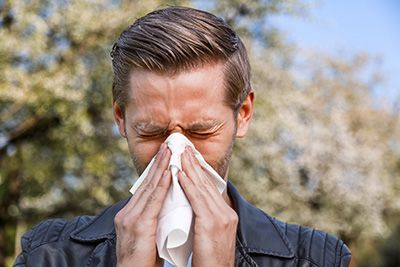 With the beauty of spring flowers and showers comes seasonal allergies. Approximately 35 million Americans suffer from seasonal allergies and while over-the-counter medicines may help, there are other ways to aid in air quality.
With the beauty of spring flowers and showers comes seasonal allergies. Approximately 35 million Americans suffer from seasonal allergies and while over-the-counter medicines may help, there are other ways to aid in air quality.
Indoor air quality is important for comfort and health reasons. Living with very dry air can irritate asthma and allergy symptoms and lead to dry noses, sore throats, and other health concerns.
Often staying indoors is worse for your allergies than the great outdoors. Your home is filled with items that can elevate symptoms – like fabric-covered furniture and pillows, carpet, tightly-sealed windows, and warm, damp spaces. Indoor pollution can be much greater than outdoor pollution, especially if you have family members who smoke or have pets. And because most of us spend a lot of time inside, it’s essential to take inventory to determine where allergens are building up.
What Can People Do to Help Combat Seasonal Allergies?
Allergies come from “stuff” in the air. For HVAC systems, dust can build up in the ductwork. When it comes to plumbing, check for any leaky pipes that could result in mold spores.
You can replace the moisture in the air and improve the quality of air in your home by adding a whole-house humidifier to your home and checking furnace filters more often. Purchasing a high-quality dehumidifier will help prevent mold that can form after hard rains and higher temperatures. Many viruses thrive in low-humidity environments and living in an overly dry environment can make people prone to infection. Putting humidity back into your home can reduce the number of health concerns.
You also could invest in HEPA vacuums or filters, electronic air filters or cleaners, and ultra-violet (UV) lights. Having an air cleaner or UV lighting will help catch the allergens in the air. UV lights also kill bacteria and mold spores.
An air purification system will help eliminate allergy-causing pollen and mites from the air. Air cleaners or a thicker filter will pull more dust from the air. The type of air filter you choose depends on how sensitive the allergies are of the person. There are simple pleated filters that are made to catch smaller particles, then there are four- and five-inch pleated filters and HEPA filters.
For homes that have air distribution issues, reworking the air ducts can help balance the temperatures from room to room and reduce hot and cold spots in the home.
